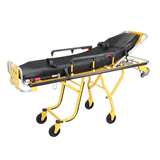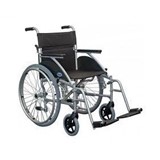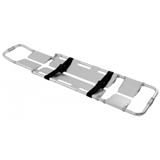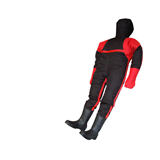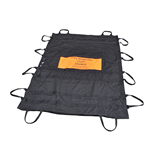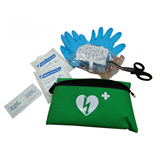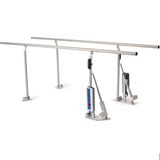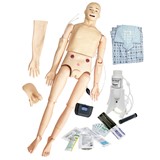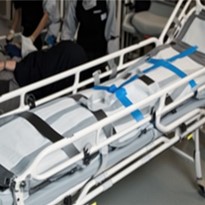In the world of rescue operations, the competence of stretcher operators plays a pivotal role in ensuring the safety and well-being of patients in critical situations. This guide will delve into the fundamental aspects of training and proficiency for rescue stretcher operators, offering a comprehensive and authoritative resource for those seeking to excel in this vital role.
I. Proper Techniques for Lifting, Carrying, and Maneuvering Stretcher
A. Body Mechanics and Ergonomics for Stretcher Operators
- Maintaining Proper Posture
Maintaining an upright posture is essential to prevent strain and injury while handling stretchers.
Proper alignment of the spine and limbs minimizes the risk of musculoskeletal issues.
- Utilizing Ergonomic Equipment
Ergonomically designed stretchers and accessories can significantly reduce the physical strain on operators.
Features such as adjustable handles and height settings contribute to operator comfort.
B. Safe Lifting and Carrying Procedures
- Team Coordination for Safe Lifting
Effective communication and teamwork are essential when lifting and carrying stretchers.
Coordinated efforts ensure even weight distribution and minimize the risk of accidents.
- Distributing Weight Effectively
Understanding how to distribute the patient's weight evenly on the stretcher is crucial to prevent imbalances.
Proper weight distribution helps maintain stability during transport.
C. Maneuvering the Stretcher in Tight Spaces
- Navigating Doorways and Narrow Hallways
Maneuvering a stretcher through confined spaces requires finesse and spatial awareness.
Techniques for angling and positioning the stretcher to pass through doorways will be discussed.
- Turning and Positioning the Stretcher
Turning the stretcher efficiently in limited spaces is a skill that stretcher operators should master.
Understanding the pivot points and using proper turning techniques is essential.
D. Stretcher Control and Precision
- Understanding Wheel Locks and Brakes
Mastery of stretcher control mechanisms, including wheel locks and brakes, ensures stability during transport.
Proper use of these features prevents unintended movement and enhances patient safety.
- Handling Inclines and Declines
Navigating ramps, slopes, and uneven terrain requires specific techniques.
We'll cover the methods for safely ascending and descending inclines while maintaining control.
II. Rescue Stretcher Handling in Challenging Conditions
A. Adverse Weather Conditions
- Rain, Snow, and Ice: Challenges and Solutions
Operating stretchers in inclement weather demands special considerations.
Strategies for maintaining stability and patient comfort in wet or icy conditions will be addressed.
- Extreme Temperatures: Maintaining Patient Comfort
Extreme heat or cold can affect both patients and operators.
Proper insulation and temperature management techniques will be explored.
B. Terrain Challenges
- Rough Terrain: Off-road Stretcher Operation
Navigating off-road terrain requires unique skills and equipment.
Techniques for safely transporting patients over uneven ground will be discussed.
- Stairs and Obstacles: Overcoming Difficulties
Moving stretchers up and down stairs and negotiating obstacles demand precision.
Methods for handling such challenges while ensuring patient stability will be explained.
C. Low-Visibility Situations
- Nighttime Operations: Proper Lighting and Navigation
Nighttime rescues demand adequate lighting and navigation strategies.
Utilizing appropriate illumination sources and maintaining situational awareness will be covered.
- Smoke and Dust: Navigating Hazards
Operating in smoky or dusty environments requires precautionary measures.
Techniques for respiratory protection and maintaining visibility will be addressed.
D. Handling Unpredictable Situations
- Dealing with Panic and Agitation
Patients may exhibit panic or agitation during rescue operations.
Strategies for managing such situations calmly and professionally will be explored.
- Unexpected Patient Conditions: Staying Calm and Composed
Unforeseen changes in a patient's condition can occur.
Guidelines for maintaining composure and adapting to these changes will be provided.
III. Ensuring Patient Safety During Stretcher Loading and Unloading
Patient safety is paramount when operating a rescue stretcher. Proper patient securement, continuous assessment of the patient's condition, effective communication with medical personnel, and minimizing jolts and impacts are key components of this critical responsibility.
A. Proper Patient Securement
- Utilizing Straps and Restraints
Properly securing the patient to the stretcher is fundamental to their safety during transportation. It involves the use of straps and restraints designed to keep the patient in a stable position. These precautions prevent unintended movement and reduce the risk of injuries during transport. Ensure that the straps are appropriately adjusted to fit the patient's size and condition.
- Preventing Patient Movement
In addition to securing the patient, it's essential to prevent any unnecessary movement during loading, unloading, and transport. This involves padding and positioning the patient appropriately to minimize friction and potential harm. It is crucial to take into consideration the patient's injuries and medical condition when securing them to the stretcher, as different cases may require specific precautions.
B. Assessing Patient Condition
- Initial Assessment upon Loading
Before moving the patient onto the stretcher, a thorough initial assessment must be conducted. This assessment should involve checking vital signs, assessing the patient's level of consciousness, and identifying any visible injuries. It is essential to document the patient's condition accurately, as this information will be crucial for the receiving medical personnel.
- Continuous Monitoring During Transport
Patient condition can change rapidly, especially in emergency situations. Stretcher operators must continuously monitor the patient's vital signs, symptoms, and overall condition during transport. This ongoing assessment ensures that any deterioration in the patient's condition is detected promptly, allowing for timely intervention.
C. Communication with Medical Personnel
- Effective Handoff Procedures
Effective communication between stretcher operators and medical personnel is vital for the seamless transfer of care. When handing off a patient, clear and concise information should be exchanged. This includes the patient's vital signs, current medical interventions, and any changes in condition during transport. Handoff procedures should follow established protocols to ensure consistency and accuracy.
- Notifying of Changes in Patient Status
During transport, if there are any changes in the patient's condition or unexpected developments, it is the responsibility of the stretcher operator to promptly notify the medical team. Timely communication allows medical personnel to prepare for any necessary interventions upon arrival at the destination, improving the overall quality of care.
D. Minimizing Jolts and Impact
- Smooth Loading and Unloading Techniques
Loading and unloading a patient onto and from a stretcher must be done with care to minimize jolts and sudden movements. Stretcher operators should work together, using proper lifting techniques and coordination, to ensure a smooth transfer of the patient. Avoid abrupt movements that could cause discomfort or injury.
- Maintaining a Comfortable Ride for the Patient
Throughout the transport, the patient's comfort should be a primary concern. Ensure that the stretcher is positioned in a way that minimizes vibrations and impacts. This may involve adjusting the angle of the rescue stretcher or using cushioning materials to absorb shocks, especially when navigating uneven terrain or obstacles.
IV. Collaborative Teamwork for Efficient Stretcher Usage
Efficient stretcher usage requires a well-coordinated team effort. This section delves into the importance of role clarification, interdisciplinary cooperation, training for team unity, and effective decision-making within the stretcher operation team.
A. Role Clarification within the Team
- Team Structure and Responsibilities
A well-defined team structure is essential for efficient stretcher usage. Roles and responsibilities within the team should be clearly established and understood. This includes designating a team leader, stretcher operators, and individuals responsible for patient care and communication.
- Chain of Command and Communication
Establishing a clear chain of command and communication ensures that decisions are made efficiently and information flows smoothly within the team. This structure enables quick responses to changing situations and minimizes the risk of misunderstandings or errors.
B. Interdisciplinary Cooperation
- Interaction with EMS, Firefighters, and Medical Staff
In many rescue operations, stretcher operators interact with various other professionals, including EMS personnel, firefighters, and medical staff. Effective cooperation and communication between these groups are essential for the successful execution of the rescue mission. Ensure that everyone understands their roles and cooperates seamlessly.
- Coordinating Efforts for Seamless Rescue Operations
Collaborative efforts are vital in complex rescue scenarios. Stretcher operators must coordinate with other team members to ensure that the patient's needs are met efficiently. This includes aligning actions with the overall rescue plan and adapting to changing circumstances as a cohesive unit.
C. Training for Team Unity
- Simulated Scenarios and Drills
Training is the foundation of effective teamwork. Regularly conducting simulated scenarios and drills helps team members become familiar with their roles and responsibilities. These exercises also promote teamwork, as individuals learn to work together in high-pressure situations.
- Building Trust and Confidence within the Team
Trust is a key component of successful teamwork. Stretcher operators should have confidence in their team members' abilities and trust that everyone will fulfill their assigned roles. Building this trust through training and experience is essential for efficient stretcher usage.
D. Effective Decision-Making
- Assessing Risks and Benefits
The ability to assess risks and benefits is crucial in stretcher operations. Team members must be capable of making informed decisions, considering the potential outcomes of their actions. This involves evaluating the patient's condition, the environment, and available resources.
- Quick Adaptation to Changing Situations
Stretcher operators often face dynamic and unpredictable situations. Being able to adapt quickly to changing conditions is a valuable skill. Team members should be trained to make decisions on the fly, adjusting their actions to ensure the safety and well-being of the patient.
V. Certification and Training Programs for Rescue Personnel
A. Recognized Training Standards
- Industry Standards and Regulations:
The field of rescue stretcher operations adheres to rigorous industry standards and regulations. These standards are established to ensure the safety and competence of rescue personnel. They encompass guidelines related to equipment, procedures, and ethical conduct. Staying compliant with these standards is essential for maintaining the highest level of professionalism.
- Accredited Training Institutions:
To attain the necessary skills and knowledge, rescue personnel must undergo training at accredited institutions. These institutions have met specific criteria and quality standards set by industry governing bodies. Training from accredited institutions not only assures a high level of education but also ensures that personnel are well-prepared for real-world scenarios.
B. Training Curriculum
- Core Skills and Knowledge Areas:
The training curriculum for rescue stretcher operators encompasses a range of core skills and knowledge areas. These include but are not limited to:
- Patient assessment and care
- Stretcher operation and maintenance
- Team communication and coordination
- Medical terminology and procedures
- Safety protocols and risk assessment
- Practical Training Exercises: In addition to theoretical knowledge, practical training exercises play a pivotal role in preparing rescue personnel. These exercises simulate real-world scenarios, allowing trainees to apply their knowledge and skills in a controlled environment. Practical exercises often include:
- Simulated rescues
- Stretcher maneuvering in various conditions
- Patient simulation and care scenarios
C. Certification Requirements
- Written Examinations:
Certification for rescue stretcher operators typically involves written examinations. These exams evaluate a candidate's understanding of the theoretical aspects covered in the training curriculum. They test knowledge on topics such as medical protocols, equipment operation, and safety procedures.
- Practical Assessments:
Practical assessments are a crucial component of certification. Candidates are evaluated on their ability to apply their training in real-world situations. This may include:
- Proper stretcher handling
- Effective patient assessment and care
- Response to simulated emergencies
D. Continuing Education and Skill Maintenance
- Regular Refresher Courses:
To maintain their certification and stay current with best practices, rescue personnel are required to participate in regular refresher courses. These courses serve as updates on any changes in industry standards, equipment, or procedures. They also provide an opportunity to review and reinforce essential skills.
- Staying Current with Best Practices:
The field of rescue stretcher operations is continually evolving. Staying current with best practices is essential for providing the highest level of care and safety. This involves staying informed about the latest developments, attending seminars, and actively participating in professional organizations dedicated to stretcher operations.
In conclusion, the competence of rescue stretcher operators is indispensable in ensuring the safety and well-being of patients in critical situations. This guide has provided a comprehensive overview of the fundamental aspects of training and proficiency for these operators.


